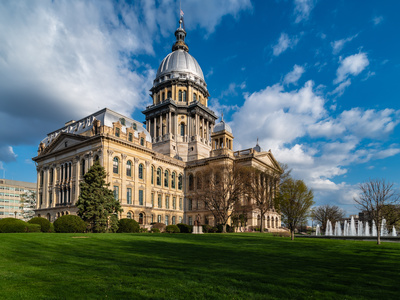-000055-400px.jpeg)
Tax & Budgets, Health Care & Wellness
Here’s How States Are Responding to Trump’s One Big Beautiful Bill Act
October 8, 2025 | Abbie Telgenhof, Morgan Scarboro

Key Takeaways:
When tax experts began predicting tax policies that state legislatures might tackle in 2020, the list was familiar: conformity, economic nexus, marketplace facilitators, taxation of services, and others. However, an unexpected new policy has emerged this year: the taxation of digital advertising and, by extension, punitive taxes aimed at big tech companies. States have been considering how to tax online activity for a few years, but this year three states have introduced legislation to tax digital advertising and companies that derive income from consumer data.
In early January, Maryland lawmakers set off a digital advertising tax debate by introducing legislation (MD SB 2) creating the “Digital Advertising Gross Revenues Tax.” The bill would levy a tax of up to 10 percent on the annual gross revenue derived from digital advertising in the state. The rate ranges from 2.5 percent to 10 percent based on the amount of global annual gross revenues. However, legal experts have expressed serious concerns about whether the tax could survive an inevitable constitutional legal challenge. The state fiscal and policy note of the bill noted opponents’ arguments that this tax violates the Permanent Internet Tax Freedom Act (PITFA) and could violate the Commerce Clause of the U.S. Constitution by assessing tax on global revenues, such that large multinational businesses would incur a larger tax burden in Maryland than Maryland-only businesses. The analysis also notes the failed 1950s effort in Maryland to impose a 4 percent sales tax on television, newspaper, and radio advertising.
Complexity issues also arise if the state attempted to administer this tax. How would the state source this tax? The proposed legislation language would use IP addresses to track where a consumer views the advertisement, but this introduces many questions: what counts as “viewing” the advertisement? What about consumers crossing state lines, or the advertiser is located outside of the state?
At the bill’s first hearing in the Budget and Taxation Committee last week, Professor Paul Romer testified in favor of the proposal. Professor Romer authored a New York Times op-ed last year encouraging a tax on digital advertising, arguing that large tech companies are forums for disinformation and hate speech, so lawmakers should levy the tax to disincentivize the use of these companies. At the hearing, he argued that even if this tax raised no money, it would still be the right choice for the state, which suggests that for many proponents of the tax the purpose of the bill is more punitive than fiscal.
Nebraska’s proposed tax on digital advertising is structured differently than Maryland’s but shares similar legal concerns. The legislation (NE LB 989) would impose the state’s 5.5 percent sales and use tax on the retail sale of digital advertisements. The bill would not, however, tax non-digital advertising, opening it up to a charge that it violates the Permanent Internet Tax Freedom Act (PITFA). PITFA, a federal law enacted in 1998 and amended several times subsequently, prevents state and local governments from taxing internet access and prohibits multiple or “discriminatory taxes on electronic commerce.” Taxing digital advertisements but not non-digital advertisements would likely violate the clause prohibiting discriminatory taxes. The Nebraska bill is awaiting a hearing in its first committee.
Though the proposed New York tax isn’t solely a tax on digital advertising, it’s one that businesses around the country should monitor. The legislation (NY AB 9112/SB 6102) would levy an additional five percent gross receipts tax on the income of every corporation “which derives income from the data individuals of this state share with such corporations.” The legislative text itself is short on policy details, but as written, this could affect a wide array of companies — from the local grocer who collects addresses and mails promotional flyers to big tech companies. If passed, the bill’s five percent gross receipts tax would raise an extraordinary amount of revenue. Other states that levy a gross receipts tax typically do so at a rate of a fraction of a point. (Ohio’s Commercial Activity Tax is levied at 0.26 percent and the Nevada Commerce Tax is levied at rates ranging from 0.051 percent to 0.331 percent.) These bills are both pending in their first committees, but if they move forward, they will require more detail in the legislative text and will likely face widespread opposition.
-000055-400px.jpeg)
October 8, 2025 | Abbie Telgenhof, Morgan Scarboro

August 5, 2025 | Morgan Scarboro

July 30, 2025 | Bill Kramer